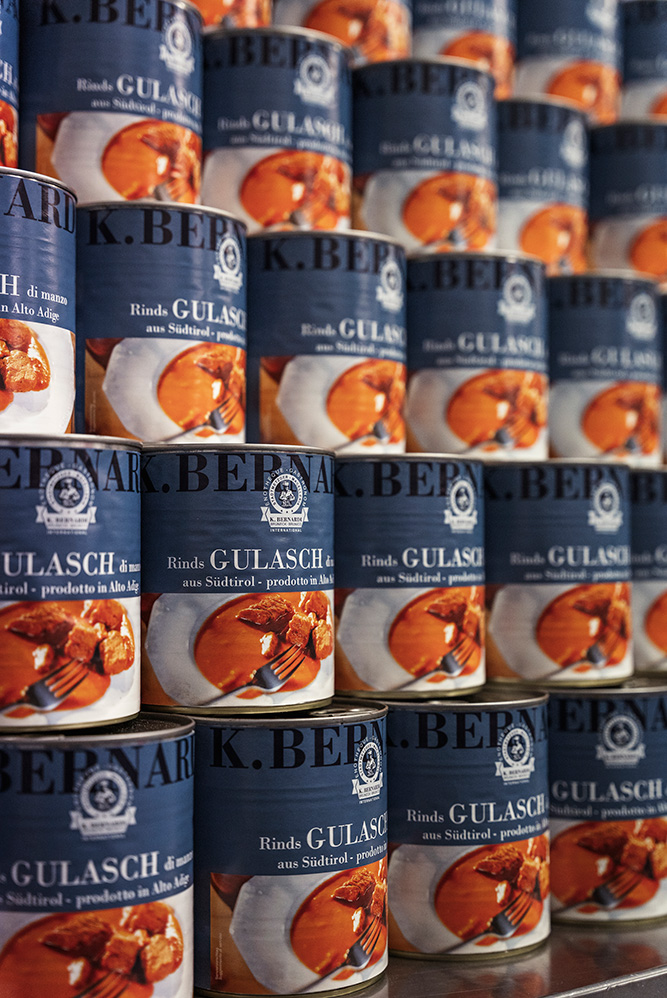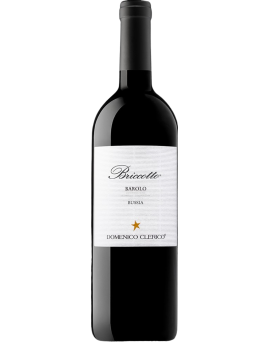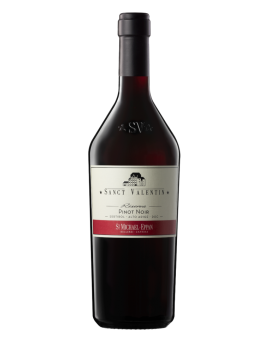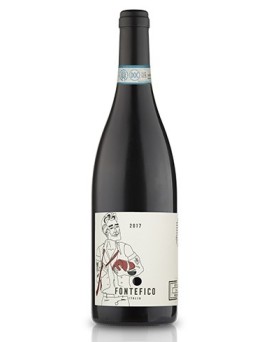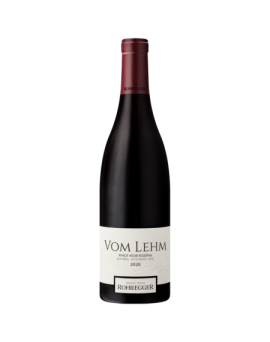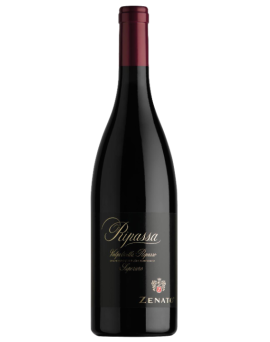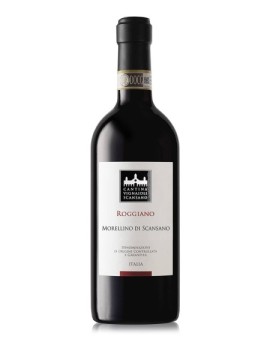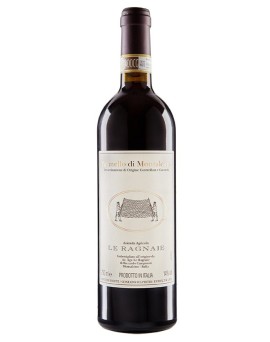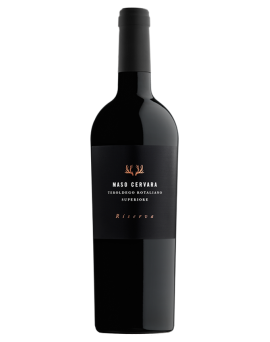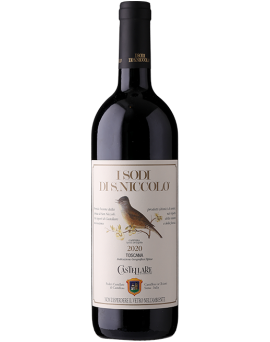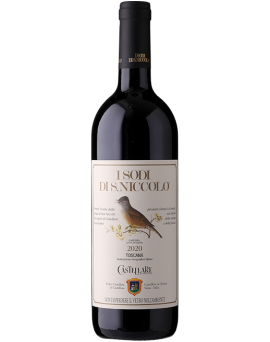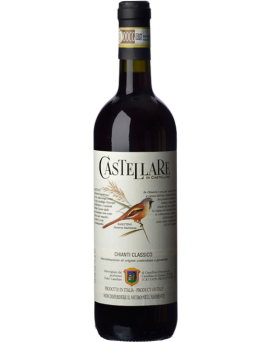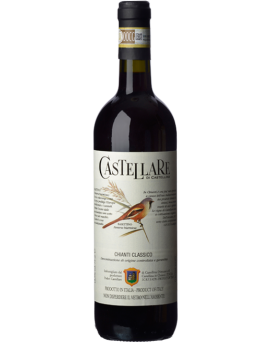Basket
0
Magnum Blauburgunder St....
<br />South Tyrol DOC<br />Pinot Noir Riserva<br />Sanct Valentin<br /><br />Pinot Noir has been cultivated in South Tyrol since 1850 and is also known in many places as Pinot Noir. It is the winery's most important red wine. This grape variety is a<br />very special challenge for the winemaker, as it is very demanding in terms of soil and climate, and must also be processed with special care in the cellar. For the Pinot Noir<br />Sanct Valentin, which has been part of the prestige line since 1995, only grapes from the best vineyards and oldest vines are used. Extremely low yields and the greatest<br />care produce an elegant and highly sensual wine, characterised by structure, balance and fine tannins.<br /><br />Eye: ruby red<br />Nose: small red berries, strawberry, violet, smoky notes, cinnamon.<br />Taste: spicy, smooth, elegant and seductive<br />Variety description: Pinot noir<br />Growing site: older vineyards in St. Michael-Eppan and surroundings (400-550 m)<br />Exposure: south-southeast to south-southwest<br />Soils: moraine rubble and limestone gravel soils<br />Method of cultivation: Guyot <br />Vine age: 8 to 26 years<br />Harvest: mid-September; harvest and grape selection by hand.<br />Vinification: Cold maceration (three days) followed by fermentation and soft pressing. Fermentation in steel tanks. Malolactic fermentation and ageing in barriques. After<br />about one year, assemblage and further maturation for 10 months in concrete barrels:<br />Wine data<br /><br />Alcohol content: 14<br />Acidity: 5,45 gr/lt<br /><br />Drinking temperature: 14-16°.<br />Ageing/potential: 10 years and more<br />Recommended consumption: Ideal as an accompaniment to braised lamb shoulder or saddle, oxtail or strong cheese. <br />
Price
€106.20
Montepulciano d’Abruzzo...
<br />Montepulciano d'Abruzzo Riserva Titinge<br />Production area: in the Pàstino vineyard, 115 metres above sea level with north-west exposure<br />Soil: silty, clayey and ferrous<br />Harvest: manual<br />Vinification: fermentation for 22 days<br />Ageing: 12 months in steel, 24 months in wood and 12 months in bottle<br />Colour: impenetrable red<br />Bouquet: delicate balsamic notes, red berries and cherries<br />Taste: soft and elegant, with pleasant tannic strength, chocolate and spices on the aftertaste<br />Alcoholic Grade: 15% vol<br />
Price
€37.60
Ripassa Valp. DOC 2020...
Ripassa Valpolicella Ripasso DOC Superiore<br /><br /><br />Immediately after the fermentation of the Amarone raisins, the best selection of Valpolicella 'ripassa' on the Amarone marc, starting the second short fermentation; in this<br />way the alcohol content increases and a product richer in colour, extracts and aromas is obtained.<br /><br />After ageing in French oak tonneaux for 18/20 months, it is then left to rest in the bottle for 6 months.<br /><br />The result of this process is a refined and concentrated wine, extremely soft and velvety, with intense aromas of small red fruits.<br /><br />Ripassa offers fruity scents and fine tannins on the palate, with an aura of chocolate and spices. It represents one of the most significant wines in Zenato's oenological<br />evolution.<br /><br />Grape varieties: 85% Corvina Veronese, 10% Rondinella, 5% Corvinone.<br />Geographical location and characteristics of the vineyard: hilly area of Valpolicella, south-eastern and south-western exposure.<br />Average altitude of the land: 250-300 metres above sea level.<br />Soil type: predominantly cretaceous, calcareous<br />Training system and planting density: guyot, with about 5,000 vines per hectare.<br />Average age of vines: 10/15 years old<br />Number of buds: 8/10 per plant<br />Yield per hectare: 100 quintals<br />Harvest time and method: first and second ten days of October. Manual harvesting.<br />Vinification: The grapes are destemmed and macerated in stainless steel fermenters for 10-12 days. After alcoholic fermentation, the new wine is separated from the skins<br />by means of a soft press and stored in steel tanks until January, when the dried grapes are pressed to produce Amarone. At this point, the Valpolicella is 'repassed' on the<br />Amarone marc with a 7-8 day period at a temperature of 25-28°C. This is followed by 18 months of refinement in tonneaux and a few months of bottle ageing in<br />temperature-controlled environments.<br />Colour: deep ruby red.<br />Bouquet: intense, fine and persistent, with hints of black cherry and plum.<br />Taste: harmonious and velvety, with good structure.<br />Serving temperature: 18°C<br />Food pairings: an excellent companion to game dishes, grilled meats and roasts, cured meats and mature cheeses.<br />
Price
€24.40
Morellino di Scansano...
Morellino di Scansano Docg Roggiano Riserva<br /><br />Grapes: Sangiovese 95%, Merlot 5%.<br />Training system: spurred cordon<br />Planting density: 3000 vines/hectare<br />Soil type: sandy-loamy<br />Altitude: 250 metres a.s.l.<br />Age of vineyards: over 25 years old<br />Harvest time: first week of October<br />Method of fermentation: selected grapes from particularly suitable vineyards. Harvesting of the grapes at perfect phenolic maturity, maceration at 35°C for 12 hours;<br />followed by fermentation at controlled temperature (max 29°C) and post-fermentation maceration on the skins for a total of 12 days from the start of fermentation. Malolactic<br />fermentation occurs naturally a few days after racking.<br />Maturation: in 225 l French oak barriques (20% first passage, 80% second and third) for 12 months. Brief passage in steel.<br />Ageing: in bottle for 10 months.<br />Ageing potential: structured Morellino di Scansano to be drunk preferably 4-8 years after harvesting.<br />Description: Morellino di Scansano Roggiano Riserva is a concentrated ruby red colour. Its nose is elegant, complex and variegated with dark fruits, flowers, spices and<br />undergrowth. On the palate it is slender, fine and balanced. Warm, fresh and rightly savoury, it shows round tannins and a nice softness. The finish has an excellent taste-<br />olfactory persistence.<br />Pairings: With roasted and braised meats, succulent meat dishes, mature cheeses.<br />Serving temperature: 16-18°C<br />Ideal glass: a large Bordeaux-type goblet.<br />
Price
€16.20
Teroldego superiore Riserva...
Teroldego Rotaliano Superiore DOC Riserva<br />THE MASO<br /><br />Within the framework of Trentino oenology, Teroldego has always had a prestigious role and for this reason it is called the 'prince wine' of Trentino. No one has so far<br />been able to say anything certain about its origin. Some say that a long time ago the Teroldego, a vine variety cultivated in the Veronese area, was brought to that large<br />nest called Campo Rotaliano, others, instead, date its origins back to the hills of Sorni, while others maintain that the name Teroldego derives from the German Tiroler Gold,<br />that is, Gold of the Tyrol. What is certain is that the first entry of the name of this vine in literature dates back to the 18th century in the oenological disquisitions of<br />Michelangelo Mariani, historiographer of the Council of Trent.<br /><br />Production area: from vineyards located in the most suitable areas of Campo Rotaliano in Trentino, in the municipality of Mezzolombardo. The soil is alluvial on gravel<br />banks of the Noce torrent, shallow, tends to be loose and well drained.<br /><br />Grape varieties: 100% Teroldego, a native Trentino vine. The yield per hectare is limited to no more than 80 quintals of grapes per hectare.<br /><br /><br />Analytical data: -Alcohol: 13,50% vol -Total acidity: 5,20g/l -Net dry extract: 30,80g/l-Sugars: dry-Contains sulphites<br /><br />Organoleptic characteristics: extremely dense ruby red wine with violet hues. The nose presents aromatic notes of small red fruits and violets. Important, well-structured on<br />the palate, balanced and enveloping thanks to the sweet tannins. The taste has an intense aftertaste of blackberry and blueberry.<br /><br />Pairings: Roasted red meats, game and very mature cheeses.<br />Serving temperature: 16 -18°C<br />
Price
€27.70
Chianti class. 2023...
At Castellare, Chianti Classico is produced using only two indigenous grape varieties: Sangioveto, the prince of Tuscan vines, which makes up 90% of the blend, and the<br />remaining 10% of Canaiolo, another typical variety of the area. The true Chianti Classico, therefore, without the addition of international grape varieties such as Cabernet<br />or Merlot, in order to maintain the authentic formula of the most famous of Italian wines while at the same time seeking maximum elegance.<br /><br />Tasting notes: the colour of this Chianti Classico is the ruby red of Sangioveto. The nose is fragrant, fresh with pleasant hints of red fruit, liquorice, currants and a light<br />touch of vanilla. The typical notes of Chianti Sangiovese dominate. On the palate it expresses a pleasant sweetness, is round, soft and savoury. Acidity and persistence<br />characterise a very elegant aftertaste.<br /><br />Pairings: A very versatile wine that also goes well with structured and important dishes. It also goes well with stews and medium-aged cheeses.<br /><br />Varieties: 90% Sangioveto 10% Canaiolo<br />
Price
€12.60

